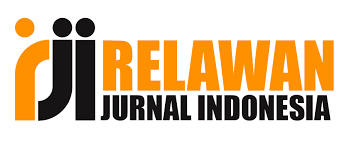Implementation and Implications Awig-Awig in the Tri Hita Karana Concept on the life Balinese indigeneous Peoples
Abstract
Awig-awig is a legal product of a traditional organization in Bali, which is made deliberately by consensus by all members. These rules serve as guidelines for the behavior of the members of the organization concerned. Every traditional village has awig-awig which is based on the Tri Hita Karana philosophy (three basic principles of happiness). Parahyangan, namely customary rules that govern the lives of members of the community in establishing a harmonious relationship with the God, Pawongan, namely customary rules regarding relationships between humans in certain customary villages, Palemahan, namely Awig-awig which regulates how the relationship between members of the traditional village and nature the surroundings. The application of awig-awig encounters several obstacles, namely the lack of understanding of the people regarding awig-awig, the lack of firmness in giving sanctions, the lack of a sense of togetherness. Awig-awig implications for the implementation of Tri Hita Karana to strengthen the application of Tri Hita Karana which is very influential on human life. If the agreed awig-awig is implemented properly, then the Tri Hita Karana concept indirectly has been implemented properly so that Hindu harmony can be established in the traditional village.
References
Artadi, I. K. (2003). Hukum Adat Bali Dengan Aneka Masalahnya. Pustaka Bali Post.
Budiadnya, P. (2018). Tri Hita Karana Dan Tat Twam Asi Sebagai Konsep Keharmonisan Dan Kerukunan. Widya Aksara Jurnal Agama Hindu, 23(2), 1689–1699. https://doi.org/10.1017/CBO9781107415324.004
Jaman, I. G. (2006). Tri Hita Karana dalam konsep Hindu. Pustaka Bali Post.
Lilik, & Mertayasa, I. K. (2019). Esensi Tri Hita Karana Perspektif Pendidikan Agama Hindu. Bawi Ayah: Jurnal Pendidikan Agama Dan Budaya Hindu, 10(2), 60–80.
Mertayasa, I. K. (2020). Tat Twam Asi : Landasan Moral Untuk Saling Asah , Asih Dan Asuh. In Beragama Dalam Damai (pp. 85–100). Jayapangus Press Books.
Pendit, I. N. S. (1994). Bhagavadgita. Hanuman Sakti.
Pudja, G. dan Sudharta, T. R. (1995). Manawadharmasastra (Manu Dharmasastra) atau Weda Smerti Compedium Hukum Hindu. Hanuman Sakti.
Putra, I. K. (1989). Pasuara dan Pararem Mengikat Secara Hukum Melalui Lembaga Sangkepan Desa Adat di Bali. IHD Denpasar.
Redana, D. N. (2011). Kode Genetik (KODON) Sebagai Bukti Dari Konsep Tat Twam Asi (Suatu Kajian Lintas Domain). WIDYATECH Jurnal Sains Dan Teknologi, 10(3), 112–131. https://doi.org/10.1017/CBO9781107415324.004
Rindawan, I. K. (2017). Peranan Awig-Awig Dalam Melestarikan Adat Dan Budaya Di Bali. Jurnal Kajian Pendidikan Widya Accarya FKIP Universitas Dwijendra, 7(1), 5–9.
Setia, P. (2006). Bali Yang Meradang. Pustaka Manik Geni.
Sumarjo. (2018). Eksistensi Awig-Awig dalam Menjaga Harmonisasi. Habitus: Jurnal Pendidikan Sosiologi, Dan Antropologi, 2(1), 27–39.
Turalaksana, I. N. (1991). Efektifitas Awig – Awig Desa Adat Dalam Mengatur Keseimbangan Masyarakat Desa Adat di Wilayah Kecamatan Kuta Kabupaten Badung. IHN Denpasar.
Wiana, I. K. (2018). “ Sad Kertih ” : Sastra Agama , Filosofi , dan Aktualisasinya. Jurnal Bappeda Litbang, 1(3).
Widyastini, T., & Dharmawan, A. H. (2013). Efektivitas Awig-Awig Dalam Pengaturan Kehidupan Masyarakat Nelayan Di Pantai Kedonganan Bali. Sodality: Jurnal Sosiologi Pedesaan, 1(1), 37–51. https://doi.org/10.22500/sodality.v1i1.9389








